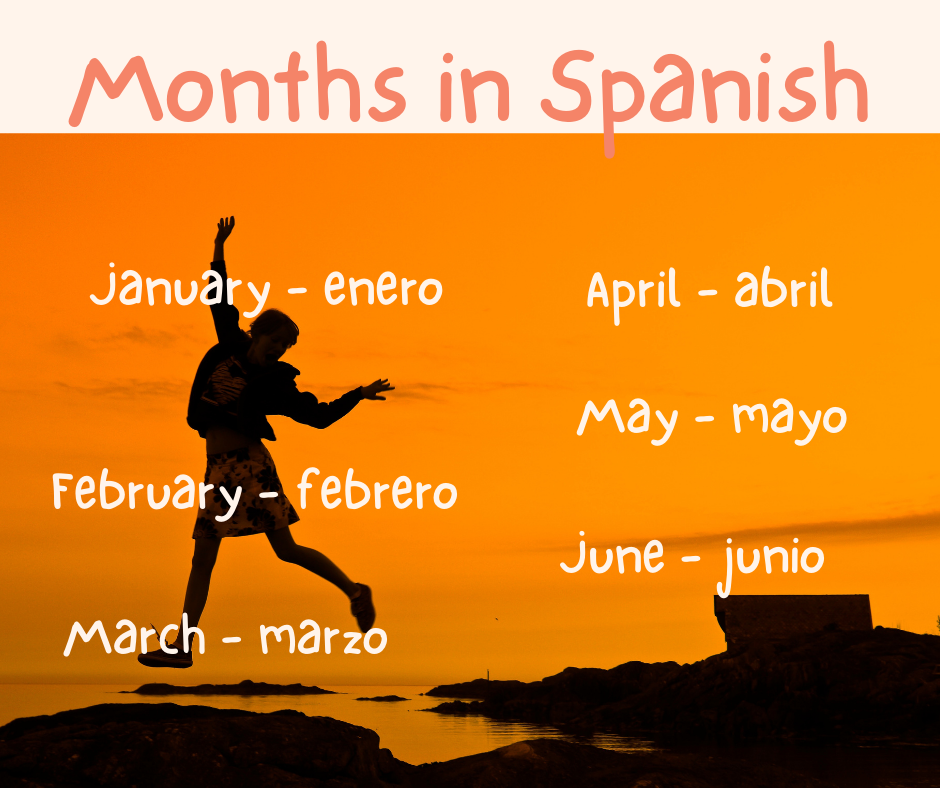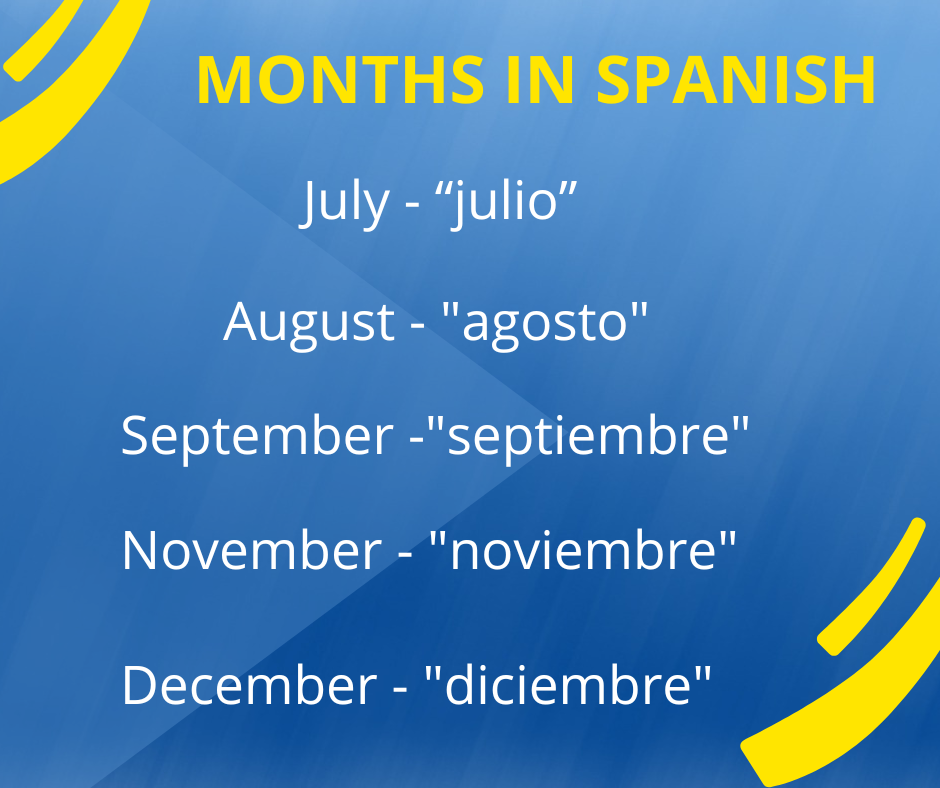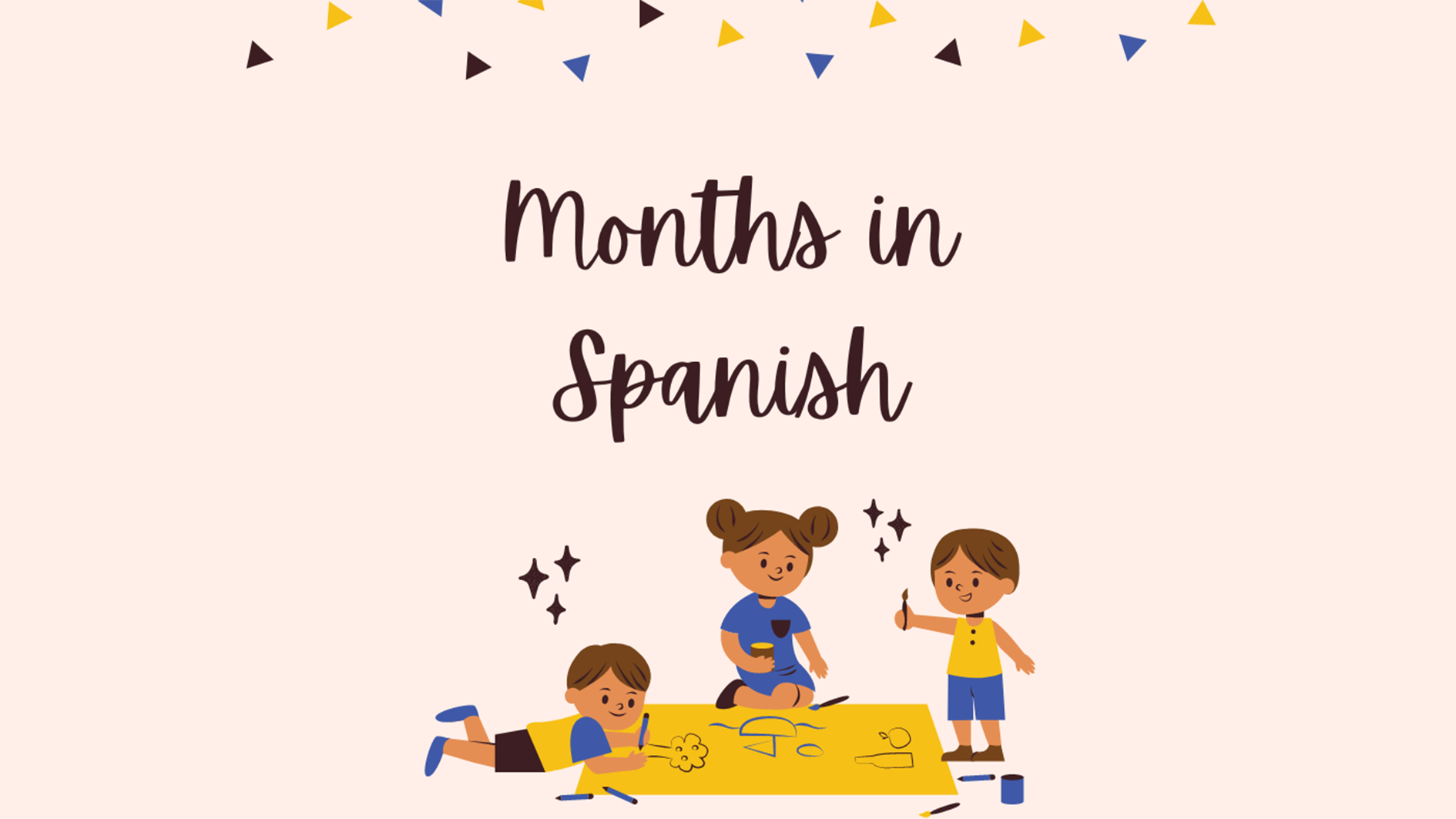Learning a new language is exhilarating and rewarding, and mastering the basics lays the foundation for fluency. Among these fundamental building blocks are the months of the year, which serve as the cornerstone of daily communication and cultural understanding. In Spanish, understanding how to say the months not only enhances linguistic proficiency but also opens a gateway to a deeper connection with Hispanic heritage, as these months are deeply rooted in the culture and traditions of Spanish-speaking countries.
In this article, we will learn how to say the twelve months of the year in Spanish. This knowledge will help with everyday conversations and special occasions. Let’s embark on this intellectual journey together as we discover how to say the months of the year in Spanish.
What are the Months of the Year in Spanish?
Here are the months of the year in English and Spanish:
- January – enero
- February – febrero
- March – marzo
- April – abril
- May – mayo
- June – junio
- July – julio
- August – agosto
- September – septiembre
- October – octubre
- November – noviembre
- December – diciembre

Important Rules to Remember before Learning Months of the year in Spanish
The first step to learning months of the year in Spanish is knowing about the grammar rules:
No Capitals
Unlike English, the months in Spanish are lowercase letters most of the time. They only get capitalized at the beginning of a sentence or become part of a proper title.
Masculine Gender
All the months are considered grammatically masculine. This means you’ll use masculine articles (“el” and “un”) and adjectives when referring to them.
Common Pattern
Number + de + Month + de + Year: This is the formula! Just follow this order to write grammatically correct Spanish dates.
Months in Spanish – Facts and Origins
The origin of the Spanish months’ names traces back to Latin, the language spoken in the Roman Empire. Given that Spain and England were under Roman rule in ancient times, it’s no surprise that the spellings of the months in Spanish closely resemble English.
January – “enero”
January in Spanish is “enero,” derived from the Latin word “Ianvarivs” (Januarius). The name honors the Roman deity Janus, symbolizing beginnings and endings. With two faces, the deity Janus symbolizes the past and the future. The Roman god also serves as the guardian of doors and gates in Roman mythology. Its origins are rooted in a rich cultural background and add depth to our understanding of the significance behind its name.
February – “febrero”
February, or “febrero” in Spanish, originated from the Latin word “Februare.” Moreover, the name symbolizes the Roman festival of purification known as “Februo,” held during this time of the year. This ancient Roman celebration, dedicated to the god Pluto, was centered around pursuing purification. It offered Romans an opportunity for spiritual cleansing and renewal, embodying a form of detoxification in the Roman tradition.
March – “marzo”
March, known as “marzo” in Spanish, traces its origins to the Latin word “Martivs” (Martius). It is dedicated to Mars, the Roman god of war. Interestingly, March held a particular significance in ancient Roman culture as it marked the beginning of their calendar year.
April – “abril”
Abril is the Spanish word for April and means “when spring arrives”! It comes from the Latin “aperio,” meaning “to open.” This makes sense because flowers open in April, and everything feels new and fresh.
Some people also think “abril” might be related to the name of the Greek goddess of love, Aphrodite. But no matter where it came from, April is a fun month with lots of sunshine and celebrations!
May-“mayo”
Mayo is the Spanish word for May, a month filled with beautiful flowers! The name might come from the Roman goddess Maia, who watched over plants growing. The Romans even had a unique festival in May called “Floralia” to celebrate all the pretty flowers and new life everywhere. So, next time you see flowers blooming in May, you’ll know it’s a special time to celebrate spring!
June – “junio”
Junio is the Spanish word for June, a month filled with sunshine and love. The name comes from Juno, the Roman goddess who watched over women and marriage. People believed Juno brought good luck to love and marriage, so June became a popular month to get married. Even today, June is a romantic time of year for many people!
July – “julio”
July, known as “Julio” in Spanish, has an intriguing story. It was initially called Qvintilis (Quintilis) in Latin because it was the fifth month in the Roman calendar. The month was renamed in honor of Julius Caesar, the celebrated Roman leader and Emperor, as it was the month he was born.
August – “agosto”
August, known as “agosto” in Spanish, has an interesting historical background. Initially named Sextilis because it was the sixth month in the Roman calendar, it was renamed Augustus in honor of the Emperor Augustus Caesar, the first Emperor of Rome. Interestingly, the transition to the new name took time. The population did not readily embrace Julius and Augustus, and Quintilis and Sextilis continued to be used for centuries, extending well into the Middle Ages.
September – “septiembre”
September, known as “septiembre” in Spanish, derives its name from the Latin word for “seven.” The Roman calendar states September was the seventh month. Of course, our calendars have undergone some changes over the centuries. July and August were added to the Roman calendar later, pushing September down to its current position as the ninth month.
October – “octubre”
Octubre” originates from the Latin word “Octobri,” which itself comes from “octo,” meaning eight in Latin. It reflects October’s original position in the Roman calendar—you guessed it, the eighth month. Although its position in the modern calendar has changed to the tenth, it has retained the name.
November – “noviembre”
“Noviembre” originates from the Latin word “noven,” meaning nine. In ancient times, November was indeed the ninth month. Though it’s now the eleventh month in our modern calendar, its name has not changed.
December – “diciembre”
December, known as “diciembre” in Spanish, follows a numeric pattern like many other months. Its Latin origin, “Decembris,” stems from “decem,” which means “ten” in Latin.

Takeaway
As we’ve explored the names of the months in Spanish, you must have understood that they offer a fascinating glimpse into the history of the Roman calendar and the evolution of language. But beyond that, learning the Spanish months is a stepping stone to mastering Spanish. Whether scheduling events or engaging in everyday conversations, familiarity with Spanish months helps with simple everyday conversations. So, we wish you the best as you open doors to a meaningful Spanish learning journey. It will deepen your appreciation for Spanish and connect you with the world of historical significance.


 April 2, 2024
April 2, 2024  6 Min
6 Min  No Comment
No Comment 



